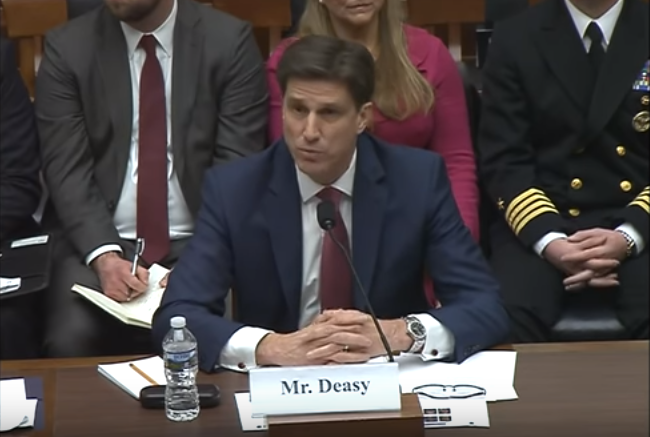The US Department of Defense (DoD) unveils its cloud initiative strategy for migrating its computing and storage functions to the cloud with “multiple cloud platforms.”
“DoD is going to focus on adopting artificial intelligence”
As the DoD embarks to stand up a Joint Artificial Intelligence Center (JAIC), it will require an enterprise cloud infrastructure capability. An enterprise cloud will provide the common data and infrastructure platforms that will enable Al to meet the full promise of warfighter advantage.
Read More: DoD needs ‘more of a startup mentality when looking at tech like AI’: Defense CIO
According to the DoD’s Chief Information Officer Dana Deasy, the cloud is fundamentally important to everything the DoD is doing in its digital modernization reform.

Dana Deasy (U.S. Army photo by William Pratt)
“Cloud in itself just gives you compute capability,” said Deasy.
“It’s what you choose to build on top of that that matters. And in this case, I believe what DoD is going to want to focus on — really embrace and accelerate as fast as we can — is how we adopt and bring artificial intelligence into the organization,” he added.
Read More: Nature is intelligent: Pentagon looks to insects for AI biomimicry design
Revealed on Monday, the DoD’s new cloud strategy identifies seven strategic objectives along with guiding principles to set a path forward.
It emphasizes mission and tactical edge needs along with the requirement to prepare for artificial intelligence while accounting for protection and efficiencies.
“It’s almost a fundamental imperative to have a cloud in place to do great things with AI”
The seven strategic objectives of the DoD Cloud initiative are:
- Enable Exponential Growth
- Scale for the Episodic Nature of the DoD Mission
- Proactively Address Cyber Challenges
- Enable AI and Data Transparency
- Extend Tactical Support for the Warfighter at the Edge
- Take Advantage ofResiliency in the Cloud
- Drive IT Reform at DoD
Technologies such as artificial intelligence and machine learning have the potential to fundamentally change the character of war.
Read More: Subterranean wartime blues: DARPA preps for battle underground
To build great AI applications, Deasy said, massive computing and massive storage capabilities will be required. “By having an enterprise cloud, it’s what we put on top of it — in this case, artificial intelligence — [so] it’s almost a fundamental imperative to have a cloud in place to do great things with AI,” he said.
Apart from AI, the DoD will have command and control and next-generation communications. “And all of that has to be wrapped around with robust cybersecurity,” Deasy added.
Read More: The Übermensch in the Cuckoo’s Nest: Malware in AI-human Hybrids
“I always like to say if you put a great enterprise cloud in place, you then can use that as an enabler to do great things,” he said.
The DoD will embrace an approach that leverages multiple cloud providers who can provide General Purpose and Fit For Purpose clouds.
The interoperability of the multi-vendor and multi-cloud environment will be governed by one overarching enterprise cloud strategy.
“The biggest reason DoD needs a cloud strategy is because it’s a rallying point for everyone to be able to talk in a common language”
To achieve the objectives outlined above, the DoD will pursue a set of guiding principles that will inform future decisions about enterprise clouds:
- Warfighter First
- Cloud Smart-Data Smart
- Leveraging Commercial Industry Best Practices
- Creating a Culture Better Suited for Modem Technology Evolution
The biggest reason DoD needs a cloud strategy is because it’s a rallying point for everyone to be able to talk in a common language and understand the end state they’re trying to achieve, Deasy said.
One key feature of the cloud is accelerated computing speed, which compresses the time it takes to stand up new capabilities and get them into the hands of the warfighter, he said.
Secondly, the DoD can build next-generation applications differently. “It allows us to take advantage of all the new technology from the various commercial cloud providers and create applications that are a lot more resilient [and elastic],” he said, adding that such apps can ask for computer power when needed and decrease accordingly.
Third, and most important, Deasy said, is the warfighter.
“One of the things traditional computing has always had a problem with is the warfighter sitting out on the tactical edge, [with the] cloud sitting [elsewhere]. Now imagine a world where we can take that compute power with new applications on top of it, and put the cloud right into the hands of the tactical fighter on the edge. That’s why the cloud is so important to us,” he said.











